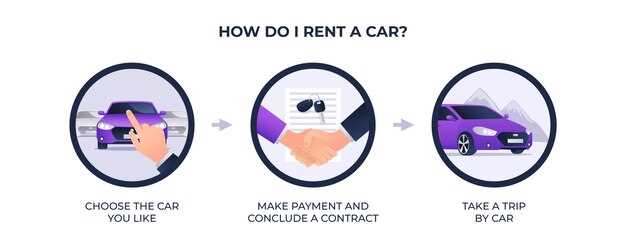Benefits of buying used car parts

In today’s economy, making smart financial decisions is essential for both individuals and businesses alike. One effective way to cut down costs is by opting for used car parts. With the rising prices of new components, purchasing used parts can lead to significant savings while still ensuring your vehicle remains in good condition.
Used car parts come with a variety of advantages that can benefit car owners. Firstly, they are generally much more affordable than new parts, allowing you to allocate your budget towards other necessary expenses or repairs. By choosing to buy pre-owned components, you can achieve the same level of functionality and reliability, all while preserving your hard-earned money.
Additionally, the environmental impact of purchasing used car parts is worth noting. This practice promotes recycling and reduces waste, contributing to a more sustainable future. By extending the life of existing parts, you not only save money but also play a role in minimizing the demand for new production, which often involves resource-intensive processes.
In conclusion, the advantages of purchasing used car parts extend beyond mere savings. They offer a practical solution for those looking to maintain their vehicles efficiently without breaking the bank, while also supporting environmentally conscious choices. With the right approach, buying used parts can be a savvy and responsible decision for any car owner.
Cost Comparison: Used vs. New Car Parts

When considering vehicle repairs or upgrades, the decision between used and new car parts can significantly impact your overall budget. Used parts typically offer substantial savings compared to their new counterparts, making them an attractive option for budget-conscious consumers.
In many cases, used parts can cost 30% to 70% less than new ones. For example, a new alternator might be priced at $500, while a used version can be found for as little as $150. This difference can lead to significant savings, especially for those undertaking multiple repairs or upgrades.
Moreover, the availability of used parts can be a game-changer. Many vehicles, especially older models, may have limited availability of new parts due to discontinuation. In contrast, salvage yards and online retailers often offer a wide selection of used parts for various makes and models. This accessibility can save both time and money.
However, it’s essential to consider the condition and warranty of used parts. While they offer substantial savings, potential buyers should assess their reliability. Many reputable suppliers offer short-term warranties on used parts, providing an extra layer of security for customers concerned about performance.
Ultimately, the cost comparison between used and new car parts reveals that opting for used components can lead to considerable savings, making it a viable option for those looking to maintain their vehicles without breaking the bank.
Environmental Benefits of Choosing Used Parts
Opting for used car parts significantly contributes to environmental sustainability. By choosing second-hand components, you help reduce the demand for new parts, which in turn lessens the strain on natural resources. The manufacturing process for new auto parts involves the extraction of raw materials, energy consumption, and greenhouse gas emissions. By selecting used parts, you indirectly minimize these harmful impacts.
Moreover, purchasing used parts supports a circular economy. This practice encourages the recycling and repurposing of materials, thereby decreasing waste. Car parts that are still functional avoid ending up in landfills, where they would contribute to environmental degradation. By extending the lifecycle of automotive components through reuse, you play a role in conserving resources and promoting a sustainable future.
In addition, the shipping and transportation related to used parts typically generates a smaller carbon footprint compared to new parts. Many used components are locally sourced, which reduces the distance traveled and the associated emissions. This local approach enhances your savings while simultaneously supporting nearby businesses and reducing overall environmental strain.
In summary, choosing used car parts is not only a financially savvy decision but also an environmentally responsible one. By making informed choices, you contribute to a healthier planet while enjoying significant savings.
Tips for Assessing Quality in Used Car Parts

When purchasing used car parts, it is essential to evaluate their quality to ensure reliability and longevity. Start by examining the part’s overall condition, looking for signs of wear or damage such as rust, cracks, or significant scratches. Ensure that the part is not excessively corroded, as this can affect its performance.
Next, inquire about the part’s history. Ask the seller about its previous usage, including how long it was in operation and the type of vehicle it came from. A well-documented history can provide insight into potential future issues.
Verify the compatibility of the used part with your vehicle model. Different makes and models can have specific requirements, so cross-reference part numbers with your vehicle’s specifications to ensure a proper fit.
Look for reputable sellers or salvage yards that specialize in used parts. Established businesses often have a reputation to uphold and are more likely to offer quality items. Reading customer reviews and feedback can provide additional assurance of their reliability.
Inspect any warranties or return policies associated with the purchase of used parts. A seller that offers a warranty demonstrates confidence in the quality of their parts and provides you with peace of mind in case the part does not meet your expectations.
Consider checking if the part has been inspected or tested by a third party. Certifications or testing results can serve as a guarantee of the part’s condition and functionality, giving you trust in your purchase.
Finally, don’t hesitate to compare prices among different sources. If a deal seems too good to be true, it often is. Assessing the average market price for the used part can help you discern whether you’re getting a fair deal or a potentially problematic investment.

